Micro-XRF in Art Conservation: Operation Nightwatch at the Rijksmuseum
Operation Nightwatch is an innovative exhibition at The Rijksmuseum in Amsterdam. Visitors to the gallery can watch researchers carrying out a major research project to investigate Rembrandt’s painting “The Night Watch”. This will involve using scientific techniques including micro-XRF to study pigments used in the painting, and reveal any alterations or hidden layers. The project can also be followed online.
Blue Scientific is the official distributor for Bruker Micro-XRF instruments in the UK and Nordic region (Norway, Sweden, Denmark, Finland, Iceland). For more information or quotes, please get in touch.
More about art conservation and research
More about micro-XRF
Contact us on +44 (0)1223 422 269 or info@blue-scientific.com
Follow @blue_scientificOperation Nightwatch at the Rijksmuseum
Operation Night Watch is a unique art conservation project and exhibition at The Rijksmuseum in the Netherlands. The goal is to study Rembrandt’s painting “The Night Watch” in order to determine the best strategy for its long-term preservation.
The entire process is taking place at an exhibition at the gallery, in a specially-designed glass chamber so visitors can watch. You can also follow the process online on the Rijksmuseum website.
Follow progress on the Rijksmuseum website
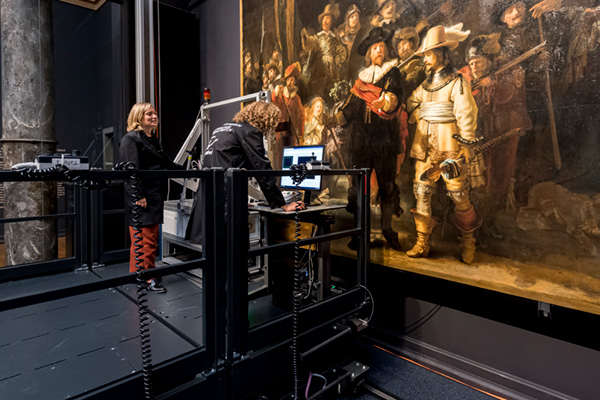
Studying the Painting
This is the most thorough and comprehensive study of the painting so far. Researchers are using the latest and most advanced analytical techniques, including digital imaging, computer science and artificial intelligence.
The aim is to develop a better understanding of the painting’s original appearance and current state, and gain insights into the changes that The Night Watch has undergone over the last four centuries. The research will help construct a treatment plan for the restoration of the painting.
The research will examine the original commission, painting materials and technique, previous treatments and interventions,ageing and degradation of the painting.
The Night Watch has been unframed and placed on a specially designed easel, enabling researchers to study the entire canvas (379.5cm x 454.5cm).
Scientific Techniques
The project will use advanced scientific imaging techniques, including Micro X-Ray Fluorescence scanning (micro-XRF / macro-XRF). This will be used alongside complementary techniques such as hyperspectral imaging (infrared reflectance imaging spectroscopy / RIS) and high resolution photography.
12,500 extremely high resolution photographs will be taken, to reveal details such as pigment particles that aren’t visible to the naked eye. This process uses cameras and lamps on a specially-designed dynamic imaging frame. This is the first time such a large painting has been photographed at such high resolution.
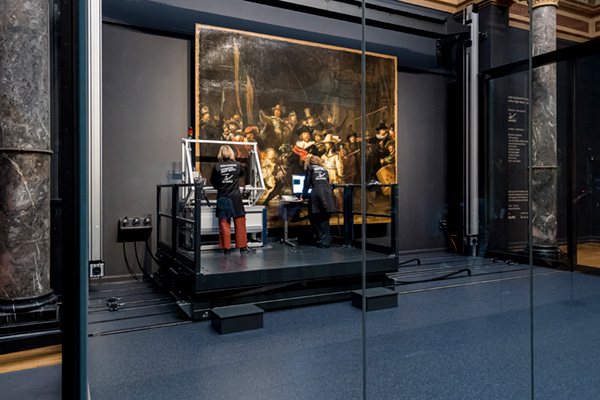
Micro-XRF Scanning
Micro-XRF is being used to scan each millimetre of the painting, using non-destructive X-rays to identify chemical elements in the paint, eg calcium, iron, potassium and cobalt. Distribution maps are generated from this data, which indicate which pigments were originally used.
Micro-XRF scans can also reveal changes in the composition, which provide insights into Rembrandt’s painting process.
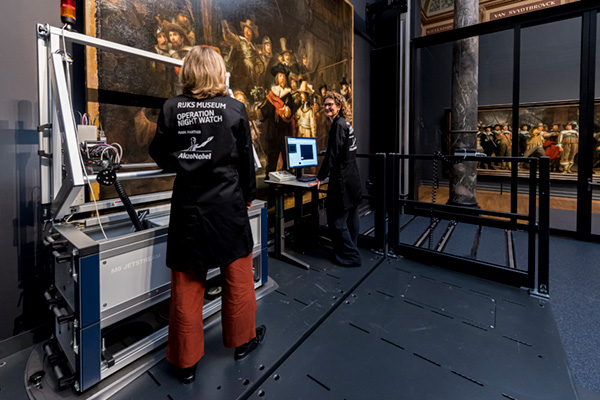
Watch the Process
The entire process can be seen by visitors to the exhibition, through a custom-built glass chamber designed by French architect Jean Michel Wilmotte.
You can watch the painting being scanned in this livestream from the gallery:
The Night Watch
The Night Watch is Rembrandt’s most ambitious painting, seen by more than two million visitors each year at The Rijksmuseum in Amsterdam.
The painting is a group portrait of officers and civic guardsmen, commissioned by one of Amsterdam’s 20 civic guard companies for its headquarters. It was completed in 1642. It’s known for its innovative composition with the troop in active poses rather than traditional static formation.
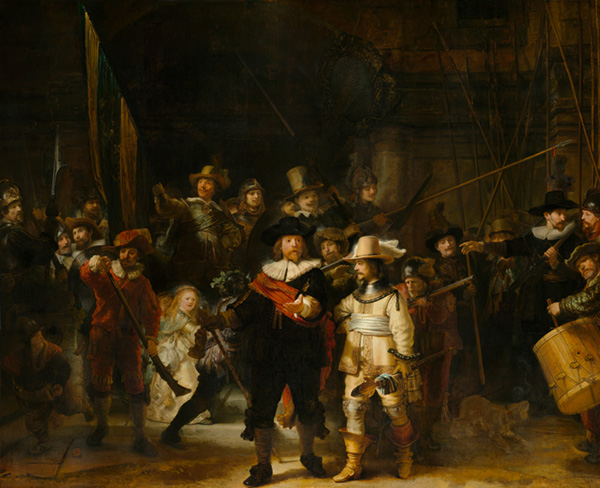
Rijksmuseum Research Team
Researchers at the Rijksmuseum have extensive experience in the investigation and treatment of Rembrandt’s paintings. The team working on The Night Watch consists of over 20 Rijksmuseum scientists, conservators, curators and photographers. The project is in collaborationwith museums and universities both in the Netherlands and abroad, including the Dutch Cultural Heritage Agency (RCE), Delft University of Technology (TU Delft), the University of Amsterdam (UvA), Amsterdam University Medical Centre (AUMC), University of Antwerp (UA) and National Gallery of Art, Washington DC.
Micro-XRF
Micro-XRF (sometimes referred to as macro-XRF) is a non-destructive analytical technique for analysing and identifying elements. As a non-destructive technique, it’s ideal for studying works of art and historic artefacts. It’s used in a wide variety of fields, including art conservation, geology, materials science, life science, electronics, quality control and more.
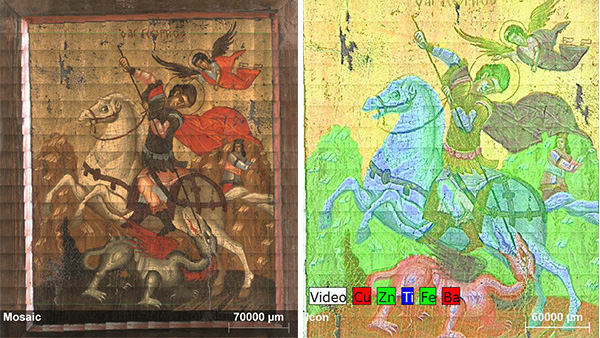
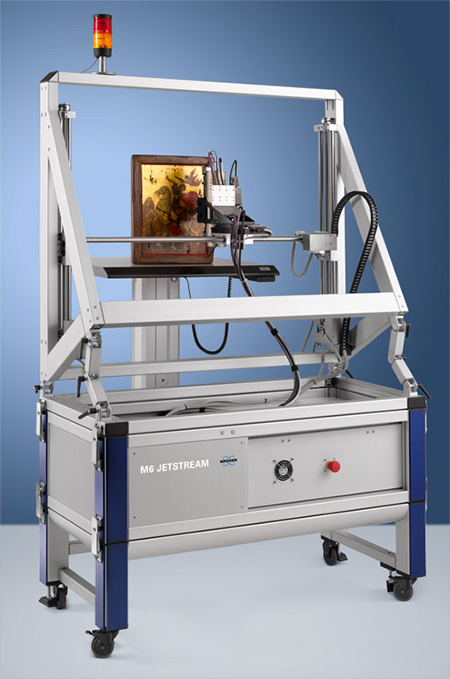
Bruker M6 JETSTREAM
- Large area micro-XRF scanner
- Designed for museums and galleries
- Portable rig – adjustable for horizontal or vertical scanning
- Verify authenticity
- Reveal hidden layers, alterations and identify pigments
More about Micro-XRF in Art Conservation
Watch videos from our workshop at The National Gallery in London to find out more about how this technique is used to study painting, manuscripts, historic artefacts and works of art:
Watch videos from our workshop
More Information
Blue Scientific is the official distributor of Bruker Micro-XRF systems in the UK and Nordic region. We’re available to provide quotes and answer all your questions – just get in touch:


